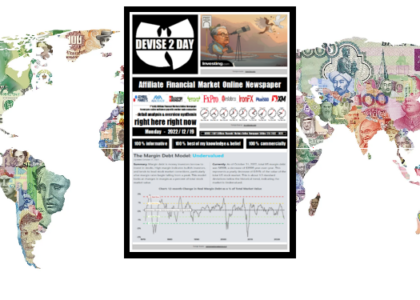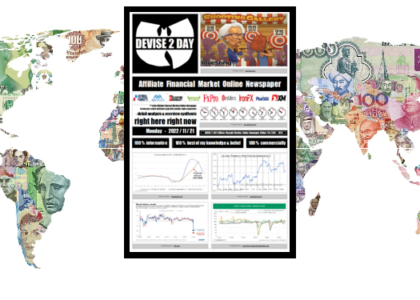
2023/01/25 (156.019) Technical Analysis – … & CBOT_MINI-YM1!
Wall Street Pares Some Losses
– As US Private Sector Contracts For 7th Month
And/Or The US Factory Activity Shrinks For 3rd Month
In General, US Wall Street Seems To Be Somewhat Overvalued At The Moment When It Comes To Company Valuations,
While The US Yield Curve Anticipates A Recession And Some Are Already Betting On Falling Interest Rates For The End Of 2023
Personally, I don’t (yet) expect a recession. Because we still haven’t had any negative growth published for the past quarter compared to the same quarter last year. Rather, stagflation is likely to persist in 2023 – higher inflation than GDP. So that the FED will probably not do anything more after 1.2 further 25 basis points hike steps willy-nilly until the end of 2023!? No more hikes let alone rate cuts?! A slightly different opinion than most of my colleagues are currently publishing. Because many are assuming interest rate cuts by the end of 2023. Which should accelerate the already overpriced US stock market, US WallStreet, even higher. But it won’t happen as I don’t expect the Fed to cut rates. So we’re still maintaining our long 4XSetUp; very much in line with George Soros theory of reflexivity (and his assumption that stock markets always tend to be either overvalued or undervalued). And since the US yield curve is a real alternative in historical comparison to the stock market; it will also be a rocky road up for the Dow Jones in 2023. But at least upwards! And not down like 2022! So that, also thanks to the last major indicators, I am realistically optimistic, with both feet on the ground, for the Dow Jones.
The Yield Curve Model: Strongly Overvalued
When short term (3-month) Treasury yields are higher than long term (10-year) yields, it is a bearish signal that is almost always followed by economic recession. Currently, the 10-year Treasury rate is 3.48% and the 3-month is 4.72%, for a spread of -1.24%. Since 1950 the historic average spread has been 1.51%. The current spread is 2.2 standard deviations above the historic trend. I consider this Strongly Overvalued.
The Buffett Indicator Model: Fairly Valued
The Buffett Indicator is the ratio of the total value of the US stock market versus the most current measure of total GDP. Currently, the total US stock market is worth $42.6T, the current GDP estimate is $26.0T, for a Buffett Indicator measure of 164%. This is 0.9 standard deviations above the historic trend of 129%. I consider this Fairly Valued.
The Price/Earnings Model: Overvalued
The PE Ratio Model tracks the ratio of the total price of the US stock market versus the total average earnings of the market over the prior 10 years (aka the Cyclicly Adjusted PE or CAPE). Currently, the current CAPE ratio is 28.6. This is 42% above the long-term historic trend CAPE of 20.2, or approximately 1.1 standard deviations above trend. I consider this Overvalued.
The Interest Rate Model: Fairly Valued
Low interest rates should generally drive higher equity prices. This model examines the relative S&P500 position given the relative level of interest rates. Currently, the current S&P500 ($3,973) is currently 0.9 standard deviations above its historical trend. The 10-year US Treasury interest rate is 3.48, about 0.8 standard deviations below trend. Netted together, this composite model suggests the total market is Fairly Valued.
S&P500 Mean Reversion Model: Fairly Valued
An extremely straightforward model stipulating that at some point, eventually, the S&P500 will tend to return towards its historic trend line. Currently, the S&P500 is at $3,973, or approximately 31% above its exponential historic trend line. I consider this Fairly Valued.
US 10-Year Treasury Yield Eases Back Towards 3.4% While Dollar Hovers Near 8-Month Lows
The yield on the US 10-year Treasury note, seen as a proxy for global borrowing costs, moved back to around 3.4%, close to levels not seen since September 2022, as mounting fears of a sharp economic downturn and prospects of a less aggressive Federal Reserve reigned appetite for government debt. Data released Tuesday showed that US business activity contracted for the seventh straight month in January, worsening concerns that the economy may be moving closer to recession. Money markets are now pricing an over 98% chance that the US central bank will hike rates by 25 basis points in February.
The dollar index held below 102 on Thursday, hovering near its lowest level in almost eight months, as rising risks of a US recession and expectations of less aggressive policy tightening from the Federal Reserve weighed on the currency. Weakening US economic data and mixed corporate earnings suggested that the broader economy is facing headwinds. Meanwhile, the country’s eased inflation bolstered bets that the Fed would further slow down its rate hikes, with money markets now pricing an over 95% chance of a 25 basis point increase at the next policy meeting. Additionally, Fed Governor Christopher Waller said that upcoming moves and the forecasted decline in inflation brought policy close to being “sufficiently restrictive.” Investors now look ahead to a flurry of US data that could offer clues about the rate path, including the Q4 GDP growth rate, durable goods orders, the PCE price index, and personal income and spending data.
Wall Street Pares Some Losses
As US Private Sector Contracts For 7th Month And/Or US Factory Activity Shrinks For 3rd Month
The S&P Global US Composite PMI improved to 46.6 in January 2023 from 45.0 in the previous month but still pointed to a seventh consecutive month of contraction in the private sector activity, a preliminary estimate showed. Activity in both service and manufacturing sectors fell at a slower pace, even as companies continued to highlight subdued customer demand and the impact of high inflation on client spending. The S&P Global US Manufacturing PMI increased to 46.8 in January 2023 from 46.2 in December, beating market forecasts of 46, preliminary estimates showed. Still, the reading continued to point to a contraction in factory activity which was the second-fastest since May 2020 as manufacturing demand conditions remained subdued. The Dow pared its losses during the session and finished in the green on Wednesday, while the S&P 500 finished muted and Nasdaq 100 was down almost 0.2%. Investors were concerned about the chance of a recession as higher borrowing costs keep more companies from growing while slower sales force some into layoffs. Microsoft was roughly down 0.3% after marking its slowest sales growth in more than six years and lowered its revenue forecast for the current quarter. Meantime, Boeing was up 0.3% after the reported loss but its first positive cash flow since 2018. AT&T added 6.6% after the earnings topped analyst estimates. In contrast, Google dipped 2.5% and its earning results are expected next week. Tesla almost gained 0.4% but IBM lost 0.5% while investors awaited earnings reports after the bell.
good morning, good day, and/or good night
at whatever time, wherever you are !
right here right now :


















